

Golfing can be a physically and mentally demanding sport, but did you know that practicing yoga can help improve flexibility and performance on the golf course? In this article, we'll explore the benefits of yoga for golfers, specific yoga poses and practices that can benefit golfers, and tips for getting started.
Yoga has numerous benefits for golfers. Not only can it improve flexibility and balance, but it can also help reduce stress and anxiety, leading to a more focused and relaxed game. By incorporating yoga into their training routine, golfers can experience a greater range of motion, better posture, and reduced risk of injury.
Downward Dog - Start on your hands and knees, then lift your hips up to form an inverted V shape. Keep your arms and legs straight and your heels reaching toward the floor. Hold for a few breaths and repeat.
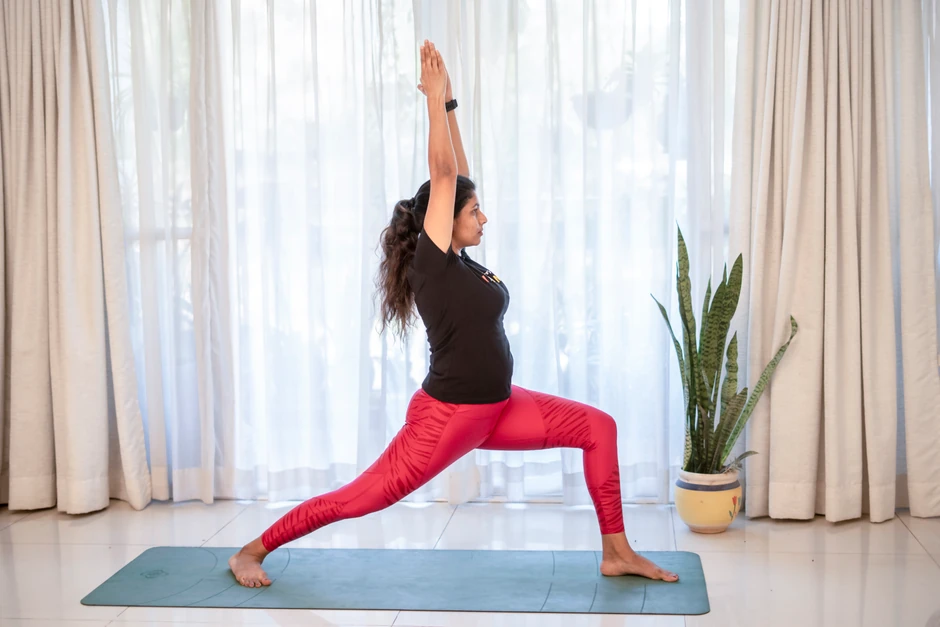
Start in a lunge position with your right foot forward. Raise your arms overhead and turn your left foot out at a 45-degree angle. Hold for a few breaths and switch sides.
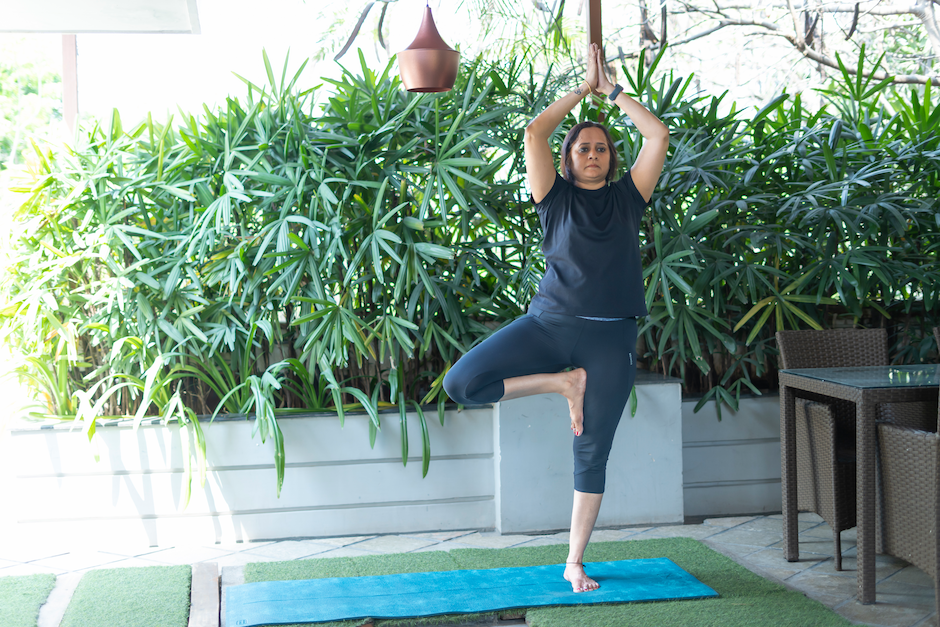
Stand with your feet hip-width apart and shift your weight onto your left foot. Place the sole of your right foot on your left inner thigh and press your foot into your thigh. Bring your hands together at your heart center and hold for a few breaths. Switch sides.
_optimized.webp)
Stand with your feet wide apart and turn your left foot out at a 90-degree angle. Extend your left arm out and reach your right arm up. Lower your left hand to your shin or the floor and hold for a few breaths. Switch sides.

Lie on your back with your knees bent and feet on the floor. Lift your hips up toward the ceiling and interlace your fingers underneath your back. Hold for a few breaths and release.

Lie on your stomach with your hands under your shoulders. Press your hands into the floor and lift your chest up. Hold for a few breaths and release.
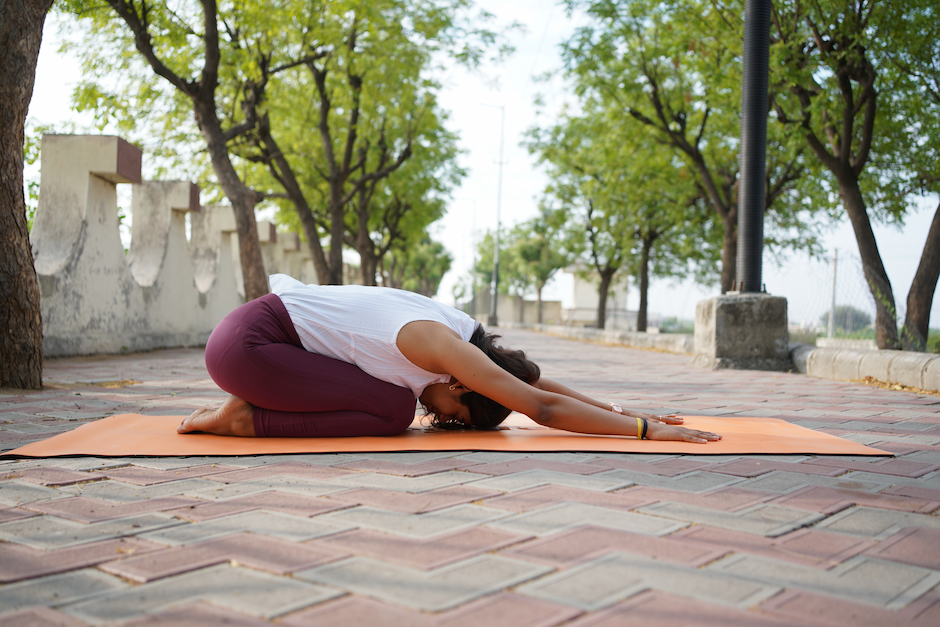
Start on your hands and knees and lower your hips back onto your heels. Reach your arms forward and rest your forehead on the floor. Hold for a few breaths.
Start in a downward dog pose, then bring your right knee to your right wrist. Extend your left leg back and lower your body down onto your right leg. Hold for a few breaths and switch sides.
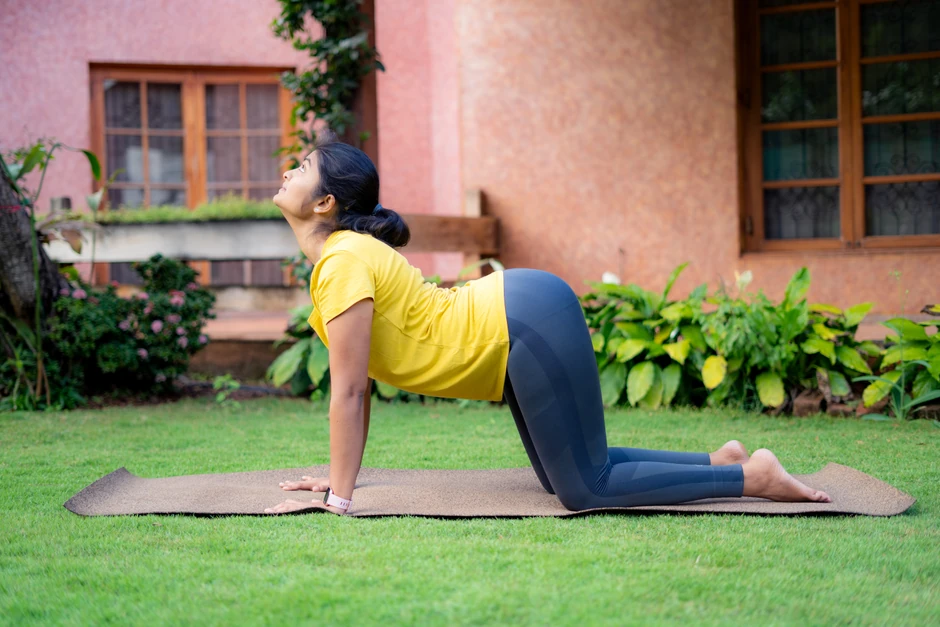
Start on your hands and knees and alternate between rounding your spine up and arching it down. Repeat for a few breaths.
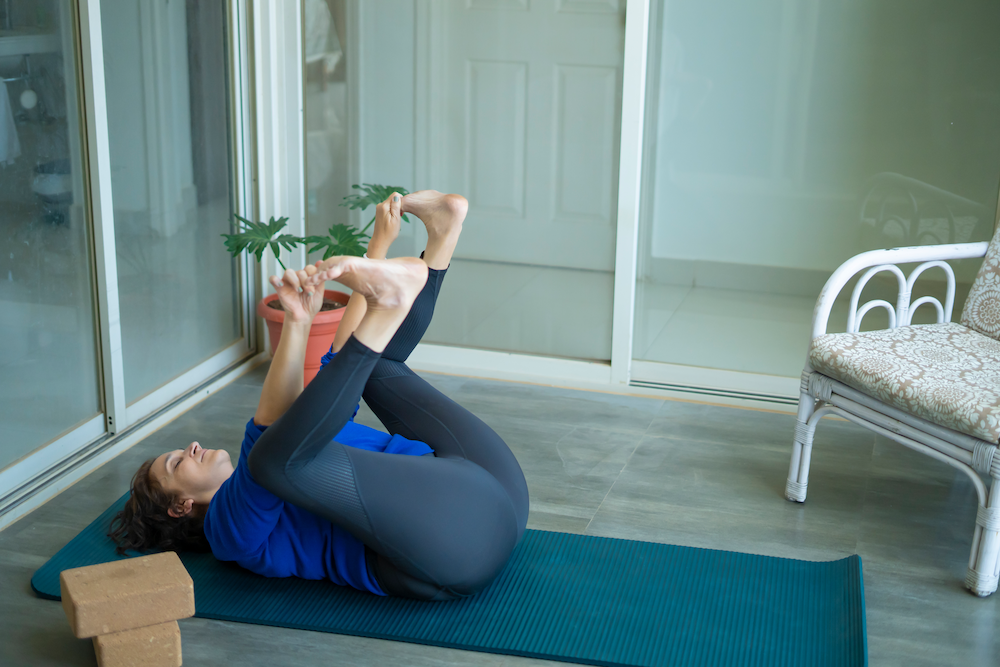
Lie on your back and bring your knees up to your chest. Grab onto the outsides of your feet and pull your knees down toward your armpits. Hold for a few breaths.
Controlled breathing exercises can help golfers stay calm and focused during a game. Try practicing deep breathing or alternate nostril breathing.
Regular meditation practice can improve mental clarity, concentration, and focus, all of which can benefit a golfer's game.
This type of yoga involves holding poses for longer periods of time (typically 3-5 minutes) and can help increase flexibility and joint mobility, which can be particularly helpful for golfers.
Restorative yoga involves holding poses for extended periods of time using props like blankets and bolsters. This type of yoga can help golfers release tension and relax deeply, which can improve overall well-being.
Also known as "yogic sleep," this practice involves lying down and following a guided meditation that leads to a state of deep relaxation. This can be a helpful practice for golfers who want to reduce stress and improve mental clarity.
When practicing yoga as a golfer, it's important to take some precautions and modifications to avoid any injuries or discomfort. Here are a few examples:
Warm-up - Before starting any yoga practice, it's important to warm up properly. This can include gentle stretching, walking, or light cardio exercises.
Don't overstretch - While it's important to stretch and improve flexibility, overstretching can cause injuries. Avoid pushing your body too far beyond its limits and listen to your body's signals.
Modify poses - If you have any injuries or chronic conditions, it's important to modify yoga poses accordingly. For example, you may need to use props like blocks or straps to support your body during certain poses.
Don't hold poses for too long - Avoid holding yoga poses for too long, as this can cause discomfort and may not be necessary for improving flexibility and performance.
Take breaks - If you feel any discomfort or pain during a yoga practice, it's important to take a break and modify or skip poses as needed.
By taking these precautions and modifications, golfers can safely practice yoga and enjoy the many benefits it can bring to their game and overall health.
For golfers who are new to yoga, it can be intimidating to get started. However, by following a few simple tips, golfers can start incorporating yoga into their training routine. It's important to start slowly and gradually build up to more challenging poses. Consistency is key, so try to practice yoga regularly. And remember, yoga is not a competition, so it's important to listen to your body and not push yourself too hard.
Incorporating yoga into a golfer's training routine can have numerous benefits, both physically and mentally. By practicing specific yoga poses and practices, golfers can improve their flexibility, balance, and overall performance on the golf course. Remember, consistency is key, so don't be afraid to start slow and gradually build up to more challenging poses. With dedication and commitment, golfers can take their game to the next level with the help of yoga.
Golfers can benefit from practicing yoga as little as once a week, although practicing two to three times per week can lead to more significant improvements in flexibility, strength, and mental focus.
Yes, practicing yoga can help golfers improve their flexibility, which can lead to better range of motion and more efficient swings. Yoga can also help golfers prevent injuries and improve recovery time.
Yoga can improve a golfer's game in several ways. By improving flexibility and range of motion, yoga can help golfers achieve a more efficient and consistent swing. Yoga can also improve mental focus, balance, and breathing techniques.
Golfers need flexibility to achieve a full range of motion during their swing, which can lead to a more efficient and consistent swing. Flexibility can also help prevent injuries and improve recovery time.
Flexibility and strength are both important for golfers, but flexibility may be more important. A golfer with good flexibility can achieve a full range of motion during their swing, which can lead to more power and accuracy. However, strength is also important for generating power and stability during the swing.
Posture is crucial in golf, as it can affect the swing mechanics and overall performance. Good posture can help golfers achieve a more efficient and consistent swing, while poor posture can lead to injury and decreased performance. Yoga can help improve posture by increasing flexibility and strengthening the muscles that support good posture.

Receive personalized guidance tailored to your unique fitness goals, live with a dedicated coach—no credit card required.